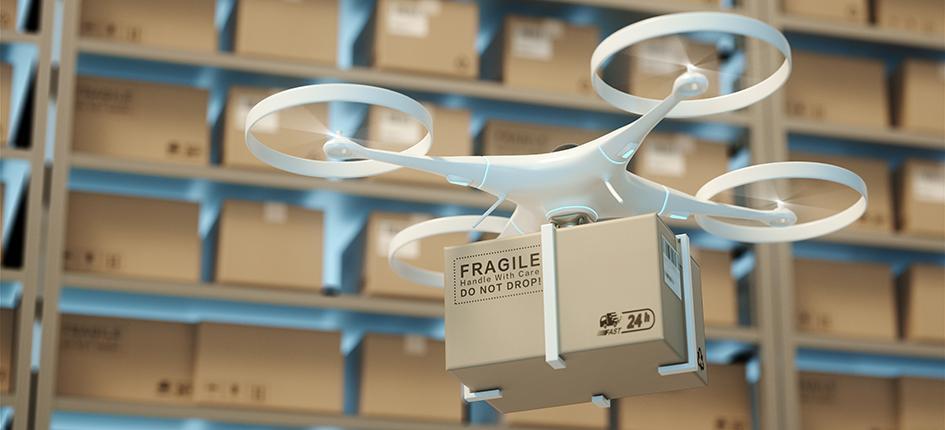Once upon a time, businesses were heavily reliant on the tedious task of manual data entry. Fingers would fly over keyboards, eyes would squint at screens, and minds would constantly juggle the fear of errors. Today, we’re going to delve deep into this archaic practice that many companies surprisingly still adhere to. We’ll take you through what manual data entry is, its role in businesses past and present, and the common types of data that are still being manually entered. So sit tight as we journey back in time and forward again, exploring the evolution of manual data entry processes.
Exploring Challenges in Manual Data Entry
Manual data entry poses several challenges, from being time-consuming to the high costs associated with human labor. Let’s delve into these issues and understand why it’s time to stop relying on manual data input.
Time-Consuming Nature of Manual Data Input
First off, let’s talk about how manual data entry tasks can eat up a lot of your precious time. Picture yourself typing away at your keyboard for hours on end, entering rows upon rows of data. It’s not just mind-numbingly boring but also incredibly inefficient.
- You could be using that time to focus on more strategic tasks.
- The repetitive nature of manual data entry means you’re spending unnecessary hours doing the same thing over and over again.
High Costs Associated With Human Labor
Next up is the cost factor. Hiring people to carry out manual data entry processes isn’t cheap.
- You need to pay salaries, benefits, and overhead costs.
- Plus, there are hidden costs like training new employees or covering for sick leaves.
Imagine if you could save all that money by automating your data entry tasks!
Risk of Human Error in Entering Information
Humans aren’t perfect – we make mistakes. AndThese errors can have serious consequences.
- Incorrect information can lead to poor decision-making.
- Fixing errors requires additional time and resources which further adds to the overall cost.
Difficulty in Scaling Up Operations
Lastly, if you’re planning on scaling up your business operations, relying heavily on manpower for data input can become a hindrance.
- Hiring more people means increased costs and management efforts.
- It also becomes challenging to maintain consistency across large volumes of work.
Highlighting Common Errors in Data Entry
Data entry errors are a common problem when relying on manual processes. These mistakes often stem from human error and can lead to inaccurate reports and delays.
Transposition Errors During Typing Process
The first type of error we often see with manual data entry is transposition errors. This happens when you’re typing away, and your fingers slip or hit the wrong keys. For example, instead of typing “123”, you might end up with “132”. It’s a small mistake but can have a big impact if it’s not caught early.
Misinterpretation of Source Documents
Another common issue is misinterpreting the source document. Maybe the handwriting is hard to read, or the instructions aren’t clear. This can lead to entering incorrect information into the system. Imagine reading an invoice for “$500” as “$50”. That could seriously mess up your financial reports!
Skipping Fields by Mistake
We’re all human, right? And humans make mistakes. One such mistake that often occurs in data entry is skipping fields or entries accidentally. You might be distracted or simply overlook a field on the form. The result? Incomplete data that could cause issues down the line.
Incorrect Formatting or Categorization
Lastly, let’s talk about formatting and categorization errors. When you’re manually entering data, it’s easy to put information in the wrong category or format it incorrectly. For instance, you might enter a date as “12/34/56” instead of “12/04/56”, leading to confusion and potential inaccuracies in reports.
Standardizing Processes for Improved Data Management
In a world where data is king, it’s crucial to get your house in order. So, let’s dive into the nitty-gritty of standardizing processes for improved data management.
The Need for Consistency in Data Handling Procedures
Data consistency is like the secret sauce in your favorite dish. It ties everything together and makes it work. When you’re consistent with data handling procedures, you’re less likely to mess up. Your database becomes more reliable, making your business run smoother.
For instance, consider a logistics company that deals with tons of information every day. If they goof up on their data entry, they might ship packages to the wrong addresses. Not cool, right? But by standardizing their document processing procedures, they can avoid such blunders.
Training and Guidelines: The Unsung Heroes
Training and guidelines are like the GPS system for your employees involved in data processing. They guide them on how to navigate through complex business processes without getting lost or messing things up.
Many businesses underestimate this aspect but remember – even a small error can lead to significant data degradation over time. So invest time in training your folks and setting clear guidelines.
Reaping Benefits from Standardization
Think of standardization as an upgrade to your productivity levels. It’s like going from dial-up internet (remember those days?) to high-speed broadband.
Standardized processes mean fewer errors and faster operations – something all businesses dream about! Plus, it leaves no room for confusion among employees about how things should be done.
Checks and Balances: Your Quality Control Warriors
Checks and balances are not just political jargon; they play a vital role in ensuring quality control during data profiling too!
These are systems put in place within companies to prevent errors from slipping through the cracks during document processing or any other process involving sensitive information.
It’s kind of like having a proofreader who checks your work before it’s published. They help keep the quality of your data in check, ensuring that you don’t have to deal with any nasty surprises down the road.
Evaluating Current Tools and Their Limitations
Commonly Used Tools for Manual Data Entry
We all know the drill. We’re stuck using outdated tools that were never designed for the digital age. Think about it: spreadsheets, databases, even pen and paper.
- Spreadsheets: They’re everywhere, but they lack flexibility.
- Databases: Powerful, but often too complex for everyday use.
- Pen and Paper: The classic method, yet time-consuming and prone to errors.
These are just a few examples of what we’re dealing with daily in manual data entry tasks.
Drawbacks of Current Tools
No tool is perfect. ButSome issues can’t be ignored.
- Lack of Flexibility: The tools we use should adapt to us—not the other way around.
- Scalability Issues: As our businesses grow, so does our data. But can our tools keep up?
- Inefficiency: Time is money—and these old-school methods are costing us both.
So yeah, there’s a lot that could be better.
Impact on Productivity
You’ve probably felt it yourself—the frustration of wrestling with clunky software when you have important work to do. It’s not just annoying; it’s a drain on productivity.
According to research, employees spend nearly 20% of their time searching for information or seeking help from colleagues due to inefficient technology systems.
That’s one-fifth of your workday gone—just like that!
Need for Better Solutions
It’s high time we stop relying on manual data entry and start exploring new software solutions that can tackle these challenges head-on.
Imagine this:
- A machine learning algorithm that learns from your input patterns
- An artificial intelligence (AI) system that automates repetitive tasks
- Real-time syncing across all devices
These aren’t pipe dreams anymore—they’re potential realities with the right resources and training.
So, what’s stopping us from making the switch? It might be fear of change or lack of knowledge about these new tools. But remember, every great invention was once a mystery.
We just need to take the leap and embrace these new ways of working.
Transition to Automation: Benefits and Steps
Efficiency Through Automation
Ever felt like a hamster on a wheel? That’s what manual data entry feels like. Automation is your ticket out of the cage, folks. It takes care of repetitive tasks, leaving you free to focus on the big picture stuff.
Imagine this: instead of spending hours typing in numbers, your system does it for you. You’re not just saving time; you’re also reducing errors that can creep in with manual work.
Case Study: Automating with MHC Northstar & Volopay
MHC Northstar and Volopay Overview
MHC Northstar and Volopay are two companies that have made their mark in the business world. They’re not just ordinary firms, but ones that have embraced technology to streamline operations.
- MHC Northstar is a leading provider of integrated business solutions.
- On the other hand, Volopay combines expense management and corporate cards into one easy platform.
The Manual Data Entry Struggle
Before these companies hit the jackpot with automation, they grappled with manual data entry. It was like trying to fill a bucket with a hole at the bottom – frustrating and time-consuming.
- Errors were frequent because, let’s face it, we’re only human!
- Efficiency took a backseat as employees spent hours keying in data manually.
Transitioning to Automation
For MHC Northstar and Volopay, transitioning to automation wasn’t an overnight affair. It was more like learning to ride a bike – you start off shaky but soon find your balance.
- They started by identifying areas where manual data entry was most prevalent.
- Next, they explored various automation tools suitable for their operations.
- After selecting suitable tools, they implemented them step by step.
- Lastly, they trained their staff on how to use these new systems effectively.
Post-Automation Benefits
After switching gears from manual to automated data entry, it was like night turned into day for both companies.
- Accuracy improved significantly because machines don’t get tired or make human errors.
- Efficiency skyrocketed as tasks that previously took hours could now be completed in minutes.
- Employees had more time for creative tasks rather than mundane data inputting.
Embracing Change, Leaving Manual Entry Behind
It’s high time you kicked manual data entry to the curb. It’s like using a typewriter in an era of laptops – it just doesn’t cut it anymore! By automating your data entry processes, you’re not just saving time and reducing errors, but also empowering your team to focus on what truly matters – growing your business.

So, are you ready for this game-changing move? With MHC Northstar & Volopay, making the switch is as easy as pie. Don’t let outdated methods hold you back. Embrace the future and let automation take your business to new heights!
FAQs
How difficult is it to transition from manual data entry to automation?
Transitioning from manual data entry to automation might seem daunting at first glance but with tools like MHC Northstar & Volopay, it’s quite straightforward. These platforms are designed with user-friendliness in mind and offer comprehensive support throughout the process.
What if I encounter issues after transitioning?
Most automated systems offer robust customer support services that can help resolve any issues that arise post-transition.
Will I need to train my staff for this transition?
Yes, although most automated systems are designed for ease of use, some training would be beneficial to ensure smooth operation and maximum utilization of all features.
How secure is my data in an automated system?
Automated systems often have stringent security measures in place including encryption and two-factor authentication among others ensuring that your data remains secure.
What kind of businesses can benefit from automated data entry?
Any business that deals with large amounts of data can benefit from automated data entry. This includes sectors such as finance, healthcare, retail, logistics and many more.


